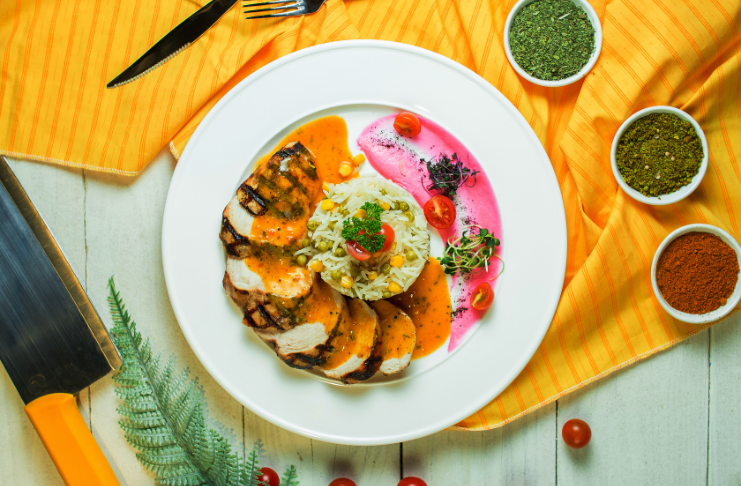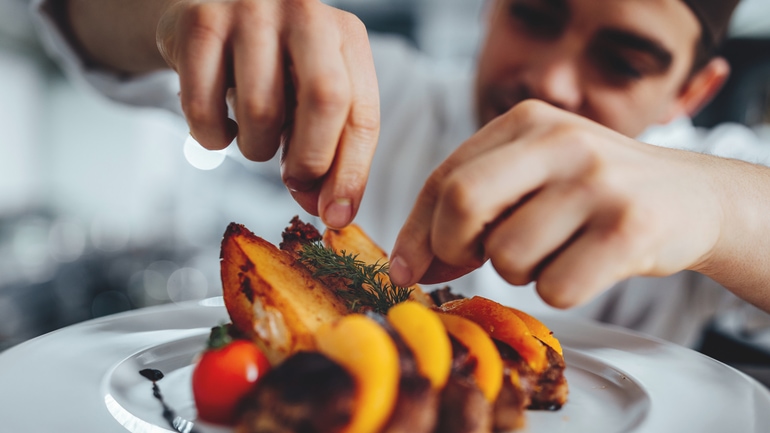JAKARTA, blessedbeyondwords.com – Food presentation is an essential aspect of cooking that transforms a simple dish into a visual feast. The way food is plated can enhance the dining experience, making meals more enjoyable and memorable. In this article, I’ll share secrets from my own kitchen experiments, offering tips and techniques to elevate your food presentation skills and make your dishes visually appealing.
The Importance of Food Presentation

Food presentation is not just about looks; it significantly influences our perception of flavor and quality. Here are several reasons why food presentation is important:
1. First Impressions Count
We eat with our eyes first. A beautifully presented dish can create anticipation and excitement, setting the tone for the entire meal. When food looks appealing, it enhances the overall dining experience.
2. Enhances Flavor Perception
Studies have shown that attractive food presentation can influence our perception of taste. A well-plated dish can make flavors seem more intense and appealing, even if the ingredients are simple.
3. Encourages Mindful Eating
When food is presented beautifully, it encourages us to slow down and appreciate the meal. This mindfulness can lead to a more enjoyable dining experience and promote better digestion.
Secrets From My Kitchen Experiments

1. Choose the Right Plate
The foundation of good food presentation begins with the right plate. Consider the size, color, and shape of your dishware. White plates are classic choices that allow colorful foods to stand out, while dark plates can create a dramatic contrast for lighter dishes.
2. Create Height and Dimension
Adding height to your dishes can make them more visually interesting. Stack ingredients, use molds, or layer components to create dimension. For example, when plating a burger, elevate the top bun slightly to showcase the vibrant toppings underneath.
3. Use Color Wisely
Color plays a significant role in food presentation. Aim for a balance of colors on the plate to create visual interest. Incorporate fresh herbs, edible flowers, or colorful vegetables to brighten up your dishes. A sprinkle of microgreens or a drizzle of bright sauce can add a pop of color.
4. Master the Art of Saucing
Sauces can be a powerful tool for enhancing food presentation. Instead of pouring sauce directly onto the dish, consider using a squeeze bottle or spoon to create artistic drizzles or dots on the plate. This technique adds sophistication and draws the eye to the main components of the dish.
5. Pay Attention to Portion Sizes
Proper portioning is key to good food presentation. Avoid overcrowding the plate, as this can make the dish look messy. Aim for a balance between the main component and any sides or garnishes. A well-proportioned plate creates a more polished and appetizing appearance.
6. Garnish Thoughtfully
Garnishes can elevate your dish, but they should complement the flavors rather than overpower them. Fresh herbs, citrus zest, or a sprinkle of nuts can enhance both the taste and presentation. Remember, less is often more when it comes to garnishing.
7. Experiment with Plating Techniques
Don’t be afraid to experiment with different plating techniques. Try using ring molds for stacking ingredients, or create a landscape effect by spreading purees or sauces across the plate. Watching cooking shows or following food bloggers can provide inspiration for new plating styles.
Real-Life Examples: My Kitchen Experiments
1. Rustic Pasta Dish
In one of my kitchen experiments, I prepared a simple pasta dish with cherry tomatoes and basil. To enhance the presentation, I twirled the pasta into a nest shape and placed it in the center of the plate. I added a few whole cherry tomatoes and a drizzle of olive oil around the edges, creating a rustic yet elegant look.
2. Colorful Salad Platter
For a summer gathering, I created a vibrant salad platter featuring mixed greens, sliced fruits, and nuts. I arranged the ingredients in sections, showcasing the colors and textures. A light vinaigrette was served in a small bowl on the side, allowing guests to dress their salads as desired.
3. Decadent Dessert
When making a chocolate mousse, I wanted to elevate the presentation. I piped the mousse into clear glasses and topped each with a dollop of whipped cream and a sprinkle of cocoa powder. The layers were visible, creating an enticing visual effect that made the dessert feel indulgent.
Conclusion
Food presentation is an art that can transform ordinary meals into extraordinary dining experiences. By applying the secrets learned from my kitchen experiments, you can enhance the visual appeal of your dishes, impress your guests, and elevate your cooking skills. Remember, the key is to experiment, have fun, and let your creativity shine. So grab your favorite ingredients, choose your plating style, and start creating beautiful dishes that are as pleasing to the eye as they are to the palate!
Sharpen Your Skills: Delve into Our Expertise on Food
Check Out Our Latest Piece on Baked Macaroni and Cheese!




